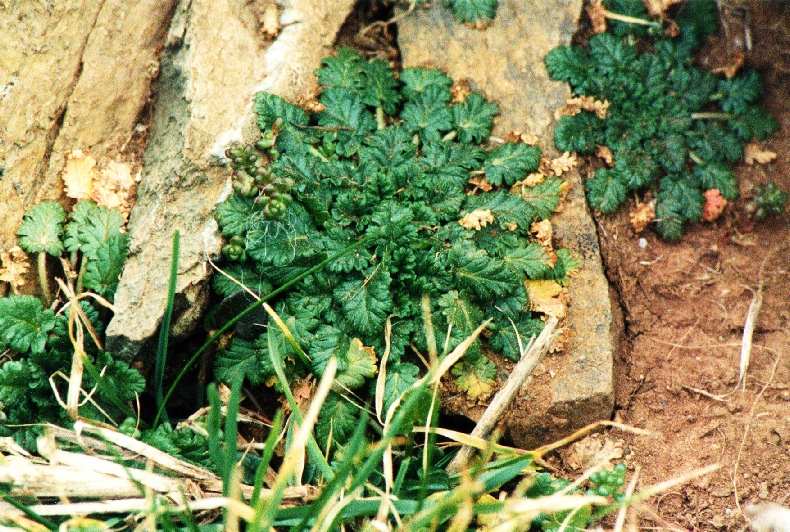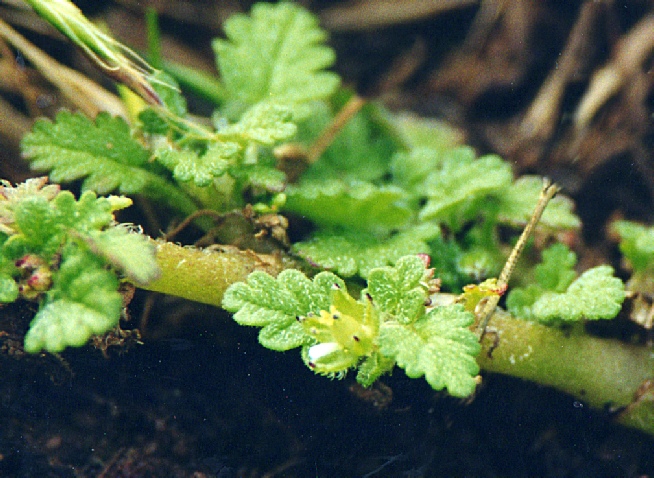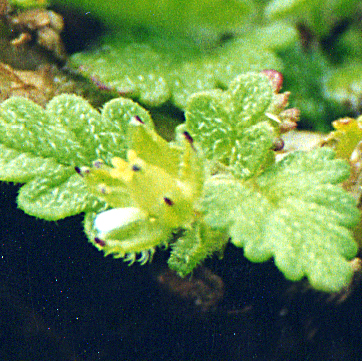Erodium
and California
This site was created and is maintained by Benjamin Coultrup.
Photos all ©Benjamin Coultrup unless otherwise indicated, 1984-
Clade I, Subclade 1
Subgenus Erodium
Clade I, Subclade 2
Subgenus Barbata
Clade II, Subclade 3
Clade II, Subclade 4
-
-
Erodium maritimum (L)L’Her.
Clade II; Subclade 4; Section Malacoidea; Subsection Richardia
A small annual plant with short hairy stems to 20cm.
Leaves entire, 0.5-



Inflorescence: Flowers usually solitary (but sometimes in pairs) tiny, 6mm across, white, veined pink; some or all of the petals may be absent usually self pollinating. Beak not more than 1cm. 2n=20
Habitat: grows in open coastal sites where competition from vegetation has been reduced by, for example, grazing by sheep or rabbit, or trampling. It is found on dry rocky cliff tops and ledges, in short turf, or on disturbed sand dunes, usually not on the shoreline. Usually germinates in late summer or autumn, and can start flowering from March, until the plant dies from drought in summer. In a wet year, mature plants can be found with younger plants and seedlings.
Distribution: Mediterranean – Italy: Tuscan Archipelago and Sardinia, Corsica, the Balearics, and Zembra Island (Tunisia): Atlantic coast – North West Spain, North West France, Ireland and Britain, from Norfolk and the south east through to Wales and north to south west Scotland. Outside Europe, only found in Tunisia and Tenerife.
Erodium maritimum between Stepper point and Butterhole, near Padstow, Cornwall, UK -
Erodium maritimum, Kitchen Corner, Gower Peninsular, UK -
Erodium maritimum, Kitchen Corner, Gower Peninsular, UK -